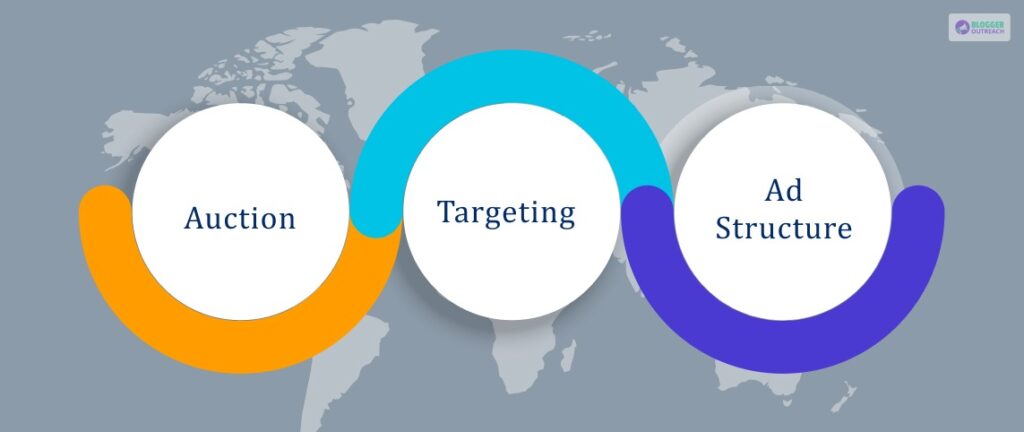Table Of Content
- 1 What Is Social Media Advertising?
- 2 Benefits Of Social Media Advertising
- 3 How Do Social Media Ads Work?
- 4 How to Make The Most Out Of Your Social Media Advertising?
- 5 Final Call – One Thing To Consider
Social media advertising seems daunting at first!
Figuring out what works the best and what’s not is the catch here!
Is it all about content?
What is the role of visuals?
Is it about following the trend?
You put a sleepless night into devising your social media advertising strategy and get no results. Whereas your competitors only spend 1 or 2 hours and garner 10x engagement than yours.
So, what’s the hack?
It’s no rocket science! It’s not about doing something out of the box.
It’s all about figuring out what separates best-performing social media advertising from campaigns that don’t work.
It’s easy to feel anxious about the responsibility of piloting the social media plane – especially if you’re a small business owner or a one-person digital marketer.
But don’t worry; you don’t have to spend a lot to create the best social media advertising strategy.
In this article, we will share everything you need to know about social media advertising and hacks to thrive with your campaigns.
What Is Social Media Advertising?

Social media advertising is that facet of Social Media Marketing where you run campaigns to reach your target audience.
With social media’s predominance, advertising has become more evident. More players are leveraging social media advertising to achieve their business goals.
It is important to reach a wide audience, generate leads, increase sales, and build brand awareness. Social media advertising allows businesses to target their ads to specific demographics, interests, and locations.
It is also an effective way to measure the effectiveness of a marketing campaign, as it allows businesses to track the performance of their ads in real-time.
The Most Widely Used Platforms For Social Media Advertising Are:
- YouTube
Benefits Of Social Media Advertising
The benefits of Social media advertising are endless. Here are they:
- Backed by a robust audience base, social media advertising gives your tremendous exposure than any other channel.
- Social media advertising allows you to personalize your campaign according to your brand voice and tone. That, in turn, boosts your brand awareness.
- The terms like, share, and comments become an inherent part of daily life. So it’s no secret that they improve engagement.
- As it comes with advanced features, it allows you to target a more niche audience with a custom audience set.
- Social media ads don’t hamper your scrolling experience. This is because the ad creatives are much identical to the regular post creatives.
How Do Social Media Ads Work?

Social ads are about targeting specific audiences. Though each platform has its own features, settings, and formats, there are some commonalities between them. Let’s dive in:
- Auction: The algorithm plays an impactful role in deciding the auction-type bidding of a social media ad. It combines ad quality, past performance, and maximum bid.
- Targeting: Your ads are of no use if they fail to reach the intended audience. Depending on the platform here, you can target users based on demographics, interests, and behaviors. Moreover, you can set up a custom audience for retargeting your prospects.
- Ad Structure: Different platforms come with different ad structures. For example, a Facebook ad account is narrowed down to ad campaigns, ad sets, and ads.
How to Make The Most Out Of Your Social Media Advertising?
Let’s take a look at the various aspects of social ad campaigns that help you to thrive.
1. Campaign Goals

To get the most out of your social media advertising, you need to choose goals that align with your business objectives.
Different goals of social media advertising are:
(i) Brand Awareness
When it comes to growing your brand, your goal should be to increase brand awareness and recognition. This can be done by creating content that resonates with your target audience and engaging with them on a regular basis. You should also focus on building relationships with influencers and other industry leaders to help spread the word about your brand.
(ii) Lead Generation
Driving leads and sales is another key goal of your social media strategy. You can do this by creating content that encourages people to take action, such as signing up for a newsletter or making a purchase. You should also optimize your website for conversions and use targeted ads to reach potential customers.
(iii) Customer Retention
Improving customer retention should be a key goal of your social media strategy. You can do this by creating content that keeps customers engaged and encourages them to come back. You should also focus on creating loyalty programs and incentives that reward customers for their loyalty.
(iv) Brand Advocates
Turning customers into advocates is another important goal of your social media strategy. You can do this by providing excellent customer service and creating content that encourages customers to share their experiences with your brand. You should also focus on creating loyalty programs and incentives that reward customers for their loyalty.
2. Know Your Audience

When it comes to creating successful social media advertising, one of the most important steps is to get to know your audience. This means understanding their likes and dislikes, their pain points, their demographics, and their expectations.
(i) Likes And Dislikes
To start, you should take the time to research your audience’s likes and dislikes. What type of content do they prefer? What topics are they most interested in? What type of posts do they engage with the most? Knowing the answers to these questions can help you create content that resonates with your audience and keeps them coming back for more.
(ii) Pain Points
Next, you should consider your audience’s pain points. What problems do they face? What challenges do they have? Knowing the answers to these questions can help you create content that addresses their needs and provides them with solutions.
(iii) Demographics
You should also take the time to research your audience’s demographics. Who are they? What age group do they belong to? What gender are they? Knowing the answers to these questions can help you create content that is tailored to their interests and needs.
(iv) Expectation
Finally, you should consider your audience’s expectations. What do they expect from your brand? What do they want to see from you? Knowing the answers to these questions can help you create content that meets their expectations and keeps them engaged.
3. Competitor Analysis

How can you outperform your competitors?
Analyzing what your competitors are doing helps you gain valuable insights into what works and doesn’t.
Here are some tips for conducting a successful competitor analysis.
(i) Check Their Post Types
Take a look at your competitors’ posts. Are they mostly text-based, or do they include images, videos, or other multimedia elements? Are they using polls, surveys, or other interactive elements? Knowing what types of posts your competitors are making can help you determine what types of posts you should be making.
(ii) Hashtag Analysis
Even if your personal social media posts, you use hashtags.
Hashtags play an important role in reaching a wider audience. Take your time and look for hashtags that your competitors are using.
You can also use hashtag analysis to see which hashtags are performing best for your competitors and use that information to inform your hashtag strategy.
(iii) Platforms They Are Using
Take a look at your competitors’ platforms. Are they active on all the major social media platforms, or are they focusing on just one or two? Knowing which platforms your competitors use can help you decide which platforms you should use.
(iv) Analyze Their Results
Finally, look at the results your competitors are getting from their social media efforts. Are they getting a lot of engagement? Are they seeing an increase in followers? Knowing the results, your competitors are getting can help you determine what strategies are working and which ones need to be improved.
4. Social Media Audit

Alright, now we are digging into the deeper aspect of this.
As social media is an ever-evolving landscape, staying on top of your advertising strategy is important to ensure optimum results.
But how can you do it the right way?
Social Media Audit – figure out your strengths and weaknesses and thrive. Here’s how you can do it:
Q1. What’s Working, And What’s Not?
Take a look at your current social media performance. Which posts are getting the most engagement? Are there any posts that could have performed better than you expected? Analyzing your successes and failures can help you determine what type of content to focus on in the future.
Q2. Who Is Engaging With You?
Take a look at who is engaging with your content. Are any particular demographics more likely to engage with your posts? Knowing who your audience is can help you tailor your content to meet their needs better.
Q3. What Are Your Most Valuable Partnerships?
Do you have any partnerships with other brands or influencers? Evaluating these relationships can help you determine which ones are most valuable and how you can leverage them to reach a larger audience.
Q4. Which Networks Does Your Target Audience Use?
You know which social media networks your target audience uses is important. If you’re not active on the networks they’re using, you’re missing out on potential engagement.
Q5. How Does Your Social Media Presence Compare To The Competition?
Take a look at how your social media presence compares to your competitors. Are they more active on certain networks? Are they getting more engagement than you? Analyzing your competitors’ strategies can help you identify areas where you can improve.
By conducting a social media audit, you can better understand your current performance and identify areas for improvement. This will help you create a more effective social media strategy and ensure you get the most out of your efforts.
5. Creating Social Media Ads

Here comes the climax! This is something that plays a crucial role in deciding the ROI of your campaign – Creating The Ad.
(i) Video Ad Or Static Banner Ad
Visuals are the deciding factors behind engagement. Be careful while creating any sort of visuals – be it videos or designs.
Video ads are gaining substantial popularity among all social media platforms. You watch more shorts and reels on social media than on static posts. And this is true for most people.
Here It Would Help If You Considered Some Factors While Creating A Video Ad:
- Less shaky the videos, the higher the chances of getting results.
- Refrain from putting a lot of background noise in your video.
- Make your video short and crisp to keep your user engaged. And try to make it under 5 minutes.
- Adding subtitles to your videos also helps people to understand them better.
(ii) Ad Headline
An ad headline is a collection of phrases or sentences that can easily hook the user’s attention and convey the essence of your ad.
You have to be mindful in crafting a headline and make it catchy. Please ensure that you’re using keywords in the headlines that tap into the pain points of your target audience. This, in turn, portrays you as an industry expert who solves your audience’s problems.
(iii) Ad Copy
Regarding social media advertising, copywriting plays an important role here. Creating compelling ad copies evokes curiosity and drives users to search for your product.
(iv) Micro Description Of Your Ad
Generally located just above or below your ad headline, this section tells what your ads are all about.
(v) Call To Action
Call-to-actions are text prompts that aim to entice the audience to take action. Make it crystal clear, and avoid using multiple CTAs.
6. Measure Your Results

Some of the most important metrics for measuring your social media campaigns are engagement, reach, fans, followers, and growth.
You can get the analytics data from the native platform that you’re using. Additionally, you can leverage tools to understand more details related to your campaign.
(i) Reach
The more people see your ad higher the chances of getting visible to your audience. This is what Reach brings to your social media advertising campaign.
(ii) Engagement
Engagement is how many people spend time with your ads out of the total number of people who see your ad.
People often tweak their copies, creatives, audience, etc., when they don’t get the engagement they want.
(iii) Followers
Are people engaging with your Ad?
If you’re attracting people, then keep track of what type of ads performs the best. If you’re not getting the desired engagement, you should refrain from creating that particular content.
When you’re checking your social media performance, just go to your profile or page, click on Insights, Analytics, or Audience (depending on the platform you’re using), and you’ll find loads of useful data that will give you an idea of the people who liked your page from organic and paid sources, as well as those who unfollowed you.
Final Call – One Thing To Consider
Social media advertising is not everyone’s cup of tea. It requires planning, execution, and optimizing it for success.
What’s more to it? We haven’t mentioned it in the above-mentioned points. We thought of mentioning it separately.
It’s your ad budget! Deciding a budget is a tactical facet of social media advertisements.
Having a low budget will not fetch results, whereas you can’t spend way too much that doesn’t align with business goals.
We are excited to see you’re getting success with your campaign.
How do you start? Let us know.
Read More:








